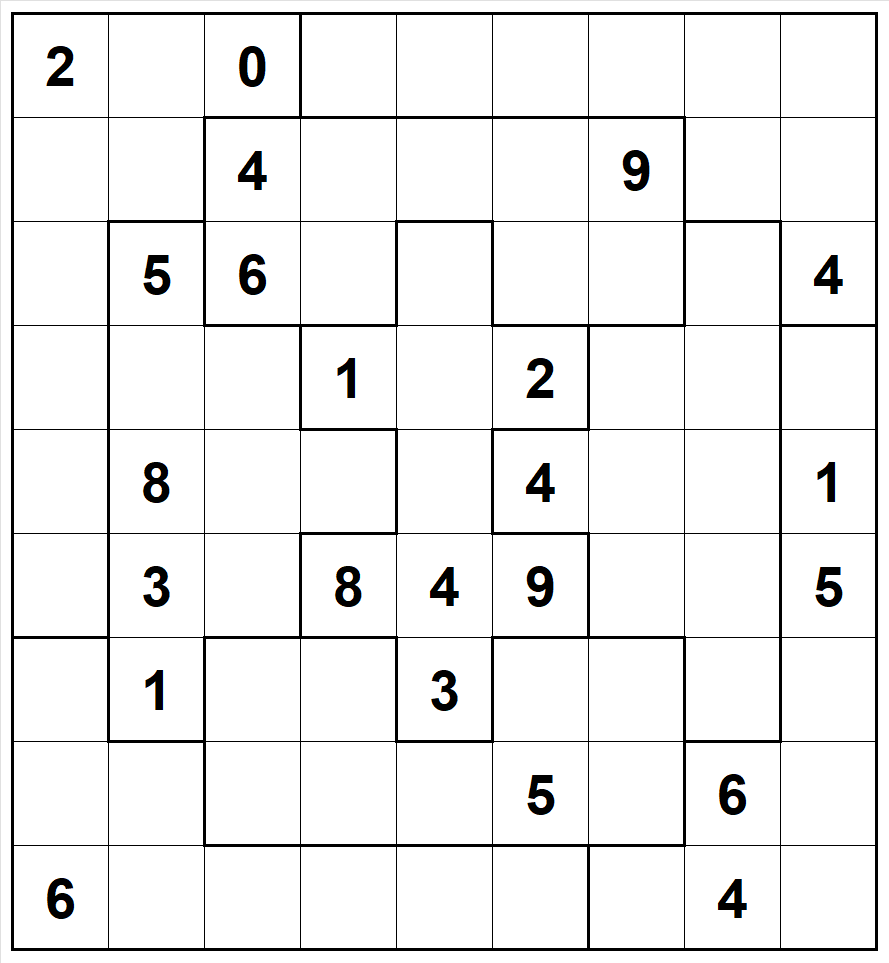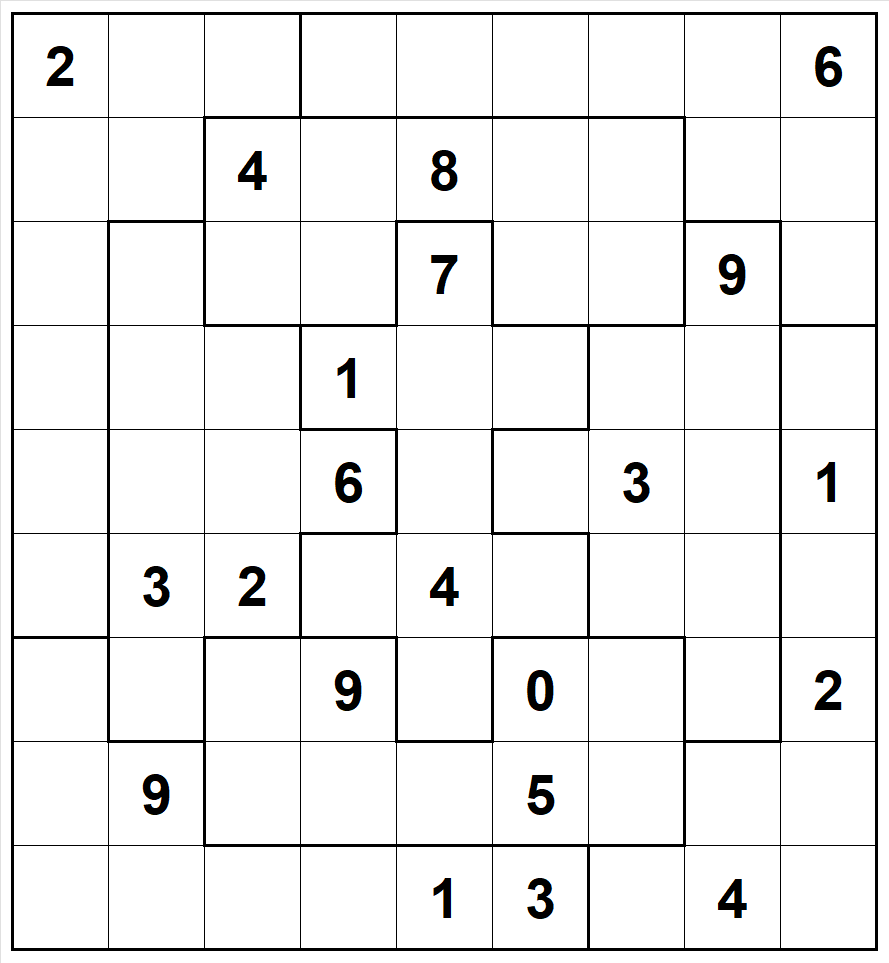The Rainbow Puzzles will often be Semi-Symmetric.
Rainbow:
The numbers are from 0-9.
There is a zero in every nonet, row and column. Zero was chosen as it increases the killer combinations, so I am sticking to it.
Each other number is missing from one and only one nonet, row and column.
For standard sudoku it is proven that the nonet is at the crossover of the row and column, this is not true for Jigsaws.
SemiSymmetric: there are five unknown pairs of numbers.
Opposite each cell number: the opposing number is itself or its partner.
At least one cell pair is required to be self-symmetric.
From this: r5c5 = 0 zero and its partner is missing in n5, r5 and c5.
Rainbow Vanilla SS Jigsaw 22 E
I liked this jigsaw shape from Urhegyi.
Check the crossover rule.
If you have not done Rainbows before do this one first - otherwise do not bother.

Very easy, about 0.7.
Rainbow Vanilla SS Jigsaw 22 H

Hard - assassin level, 1.2+




